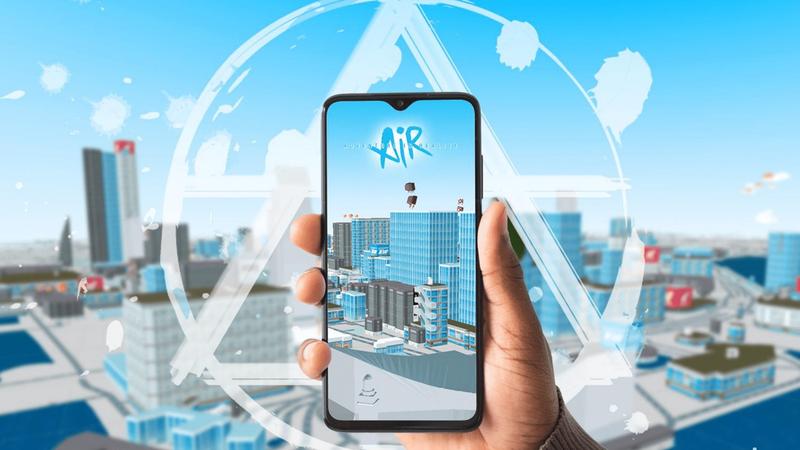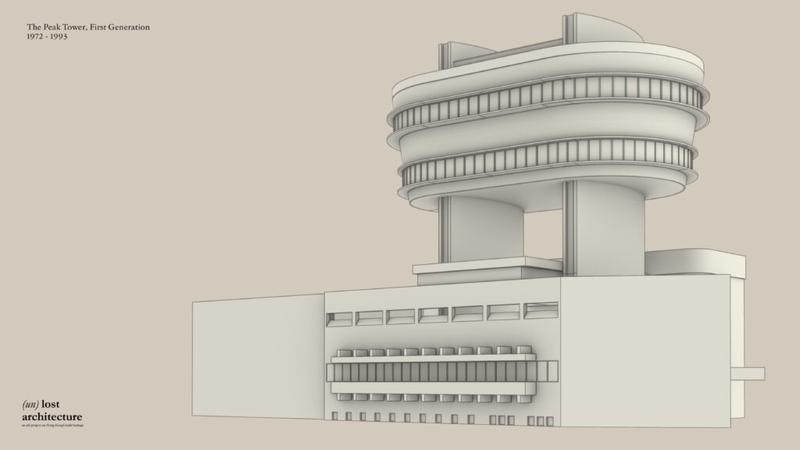In the second installment of our NFT series, Sakura Ip looks at how these tokens of noninterchangeable data are gaining currency across diverse fields, from sports memorabilia and virtual real estate to educational games and heritage preservation.
 Superstar fencer Edgar Cheung’s winning moment at last year’s Tokyo Olympics is captured in a piece of NFT art to be accessed in the metaverse. (PHOTO PROVIDED TO CHINA DAILY)
Superstar fencer Edgar Cheung’s winning moment at last year’s Tokyo Olympics is captured in a piece of NFT art to be accessed in the metaverse. (PHOTO PROVIDED TO CHINA DAILY)
Removing his mask after the individual foil quarterfinal bout at last year’s Olympics in Tokyo, Hong Kong star fencer Edgar Cheung Ka-long held his hand up to his ear as the audience cheered. The action raised the roof at the Makuhari Messe Event Hall in Chiba City, and at every shopping mall in Hong Kong with a giant screen. Now, that historic moment has been immortalized as non-fungible token (NFT) art.
After Cheung clinched Hong Kong’s first Olympic gold in 25 years — and only its second one ever — the passion of fans was ignited like never before. Now, through the NFT project Gold4HK, the Hong Kong men’s foil team can engage with fans in a new space — the metaverse.
“The Gold4HK team will follow us around the world and create content about fencing and our team, while we focus on training and bringing back the gold again in 2024,” said Cheung during his training stint in Paris this past winter.
His teammate Lawrence Ng Lok-wang is also featured in the collection. “I have seen a lot of amazing NFT projects in the US within sports like the National Football League,” he says. “We think fencing also deserves to enter this space.”
 Pi, from the Planet of the Plants collection, sold for around $2,700 in early February. (PHOTO PROVIDED TO CHINA DAILY)
Pi, from the Planet of the Plants collection, sold for around $2,700 in early February. (PHOTO PROVIDED TO CHINA DAILY)
Coach Greg Koenig says it will be the first-ever NFT collection launched by a fencing team. “Fencing and sports are always about team spirit, courage, sacrifice and evolving with the times — sometimes through new techniques and sometimes with new technologies. (NFTs provide) a great opportunity for sports brands and athletes to explore new ways of collecting memories: mixing sports and digital art. We want to ... keep pushing boundaries in our sport and our training.”
Besides organizing merchandize, signed photographs and giveaways like any celebrity fan club, Gold4HK is offering special benefits to owners of its NFTs, which were designed by Olia Koenig (wife of Greg). Each artwork will act as a membership pass to access private chats on the instant messaging and digital distribution platform Discord, raffles, events, and bespoke content like photos and interviews leading to the Paris Olympics in 2024. Members also stand a chance to meet the champions virtually and in real life.
“Think of Gold4HK as a live documentary and behind-the-scenes content about the lives of the athletes,” says Timothée Semelin, the project’s head of marketing. Yesterday 888 Genesis Platinum Membership NFTs dropped for presale, while 2,304 Genesis Gold Membership NFTs are scheduled for presale on April 28.
Last week, Gold4HK announced a partnership with local Bored Ape Yacht Club NFT collectors Elite Apes. Besides co-creating NFTs, the partners will collaborate on hosting exhibitions and events in real life. “Through this project, we can not only gather together as fans (of the fencing team), but also interact with the athletes directly,” says Jason Au, Elite Apes’ founder and CEO. “It’s definitely a unique experience.”
 Timothy Yu, founder and CEO of Hong Kong-based educational platform Snapask. (PHOTO PROVIDED TO CHINA DAILY)
Timothy Yu, founder and CEO of Hong Kong-based educational platform Snapask. (PHOTO PROVIDED TO CHINA DAILY)
Learning curve
Apart from memorializing sporting history, NFTs are also opening the door to a new world in other sectors.
For local online education platform Snapask, NFTs help fulfill their mission to make education fun. In February, it launched an Ethereum-based game, Planet of the Plants.
“Games are the best bait for learning — 99 percent of students prefer playing to studying,” observes Timothy Yu, founder and CEO of Snapask. A math teacher on the platform, Yu says that when he was at school, he learned about the Three Kingdoms in Chinese history from the Japanese video game Dynasty Warriors. “Growing plants is similar to the learning process,” notes Yu, who has a green thumb.
The Snapask game sees players perform tasks that test their knowledge in exchange for nutrients to help grow virtual plants. Each NFT is a rare species, from Pachypodium (a spiny succulent) to agave and six of the 10 — with cosmic names like Infinity, Gravity and Time — sold during launch month.
 The AiR Metaverse promises users access to location-based gameplay in a Hong Kong-themed virtual city via an app on their phone. (PHOTO PROVIDED TO CHINA DAILY)
The AiR Metaverse promises users access to location-based gameplay in a Hong Kong-themed virtual city via an app on their phone. (PHOTO PROVIDED TO CHINA DAILY)
Through a play-to-earn ecosystem supported by technologies including virtual reality (VR) and augmented reality (AR), Snapask will transform complex, abstract concepts — from black holes to the theory of time to quantum mechanics — into immersive, experiential adventures in the metaverse.
“It’s never been about the existence of knowledge,” says Yu. “Knowledge has been out there (in printed form) for ages, but not everyone knows how to learn effectively. And that’s our job.” He notes that smart contracts will play an essential role in the education revolution of the coming decades: “Education will be decentralized in the era of Web3 (a new iteration of the Web, based on blockchain technology). Creators will no longer need schools or publishers to channel their work.” Powered by the blockchain, smart contracts will be among the systems rewarding creators according to their contribution — such as through shared intellectual property, and using viewership to determine income — fairly and transparently.
Before launching its first early-stage NFT project in the metaverse, Snapask had published 5,000 hours of learning content and courses. “Each video is (produced) by 30 to 40 creators from different professional disciplines,” Yu explains.
Over the past 10 years, Snapask has reached over 4.7 million student users and 350,000 qualified tutors across Asia. By entering the boundless metaverse, the startup is contributing to establishing a global creator economy. As Yu observes: “We need a good system to reward our creators for their hard work.”
 Architectural historian Charles Lai created the (un)lost architecture NFT project which has brought five demolished Hong Kong structures back to life. (PHOTO PROVIDED TO CHINA DAILY)
Architectural historian Charles Lai created the (un)lost architecture NFT project which has brought five demolished Hong Kong structures back to life. (PHOTO PROVIDED TO CHINA DAILY)
Time traveler
NFTs have a futuristic sheen, but they can also provide ways to interact with the past. Architectural historian Charles Lai is using the technology to preserve long-lost architecture in the cramped, fast-changing metropolis that is Hong Kong. He launched the nostalgic NFT project (un)lost architecture last December. Five demolished structures are brought back to life in 59 NFTs featuring high-res digital artwork, with rendered images and videos. Dropping last month, the NFTs’ sales performance surprised Lai.
“I thought it was a niche market. But it turns out people from different backgrounds, including finance, are interested in historical architecture,” he says. The most popular structures are Central Star Ferry Pier (third generation, 1957-2006), Queen’s Pier (second generation, 1954-2008) and the Peak Tower (original, 1972-93).
Lai has also taken the opportunity to test rare, classic works in the market, such as Club Germania (1902-62; St. Joseph’s College from 1918) and the General Post Office (third generation, 1911-76). “With the digital version, you can zoom in to fancy remarkable details such as gothic architecture features,” says Lai, who holds a PhD in architectural history from the University of Hong Kong.
In recent years, the city has made progress in conservation. The former Sham Shui Po Service Reservoir — its ancient Romanesque architectural features were discovered in December 2020 — is open for guided tours. The same year, the then 68-year-old State Theatre escaped demolition when New World Development, one of Hong Kong’s largest developers, announced plans to restore it following a five-year, community-led preservation campaign.
 The original Peak Tower (1972-93) — then site of the Peak Tram’s upper terminus — in its (un)lost architecture incarnation. (PHOTO PROVIDED TO CHINA DAILY)
The original Peak Tower (1972-93) — then site of the Peak Tram’s upper terminus — in its (un)lost architecture incarnation. (PHOTO PROVIDED TO CHINA DAILY)
“Conservation is usually initiated by the government, academia and major developers. It’s effective but has blind spots that might overlook small and old construction,” Lai notes. “NFTs are a game changer, offering a new approach for architecture conservation to bridge the gap between (the digital and real worlds).”
Building 3D models with software is a cornerstone of modern architecture. Having recreated lost architecture in the metaverse, Lai is looking for investment and cooperation to develop an AR “time-traveling tour”. This will provide an immersive, virtual look into the construction of the interiors of these historical buildings — an experience far beyond anything 2D photos can provide.
In black and white for now, to save on cost, the AR experience is expected to evolve quickly. “It can be as colorful and real as a video game if we can afford the cost of technology like material mapping,” Lai enthuses. He adds that since NFT technology can turn digital art files into assets, NFT sales are also a fundraising activity to create sustainable income for further development: “The profit will be reinvested into research and conservation of built heritage.”
The second batch of the (un)lost collection will be released by year end, but the architecture to be featured remains a secret. Going forward, Lai hopes to expand the project with lost architecture from cities such as Shanghai and London.
 Terence Chow, CEO of Air World. The startup’s AiR Metaverse — created in collaboration with local artist Felix Ip — contains 100 Hong Kong landmarks as customizable NFTs. (PHOTO PROVIDED TO CHINA DAILY)
Terence Chow, CEO of Air World. The startup’s AiR Metaverse — created in collaboration with local artist Felix Ip — contains 100 Hong Kong landmarks as customizable NFTs. (PHOTO PROVIDED TO CHINA DAILY)
Into the metaverse
While Lai amasses an NFT collection of lost architecture, local tech startup Air World is busy building a Hong Kong-themed virtual city: the AiR Metaverse. Short for Adventure in Reality, AiR has an offline-to-online (O2O) mode with location-based gameplay to connect users to authentic experiences in the metaverse. “We want to create value for NFTs, and a metaverse that people can feel, touch and use in the real world,” says Terence Chow, Air World’s CEO.
Collaborating with local artist Felix Ip of Hong Kong Machines, AiR reimagines a series of Hong Kong-themed hot spots. In its first round of presale in March, 100 iconic structures — including the Peak Tower, Causeway Bay’s Tower 535, and the city’s best-known shopping malls and commercial buildings — were offered on sale to invited guests. One corporate buyer confirmed acquiring more than 10 virtual buildings, for millions of Hong Kong dollars, to provide clients and partners with a metaverse experience. “We’re providing limitless possibilities for NFT developers and will eventually create an NFT playground together,” says Chow.
Owners of virtual-building NFTs can customize their constructions. Users can build malls and flagship stores, art galleries, theme parks and event spaces to monetize their buildings with entrance fees. They can install billboards on the building exterior and resell the property for a profit, like in the real world. A local NFT brand has signed an initial purchase offer for the virtual space of the Central Harbourfront Event Space, where the brand’s virtual carnival will be held.
“We want it to be the most accessible and practical metaverse for users,” says Chow. For this the O2O mode is key. Users start their adventure in the real world through an app on their smartphone. Using their mobile device and a VR device, they can then access various game scenes in the AiR Metaverse simply by scanning the QR codes found in different places in real life. Users can win cryptocurrencies, NFTs and physical rewards in the process.
Chow also reveals that O2O campaigns with retail brands and malls are ongoing: “We start from Hong Kong and showcase how the metaverse can meet various business needs, (beyond promotions).” It’s a breakthrough as far as the metaverse economy is concerned.


